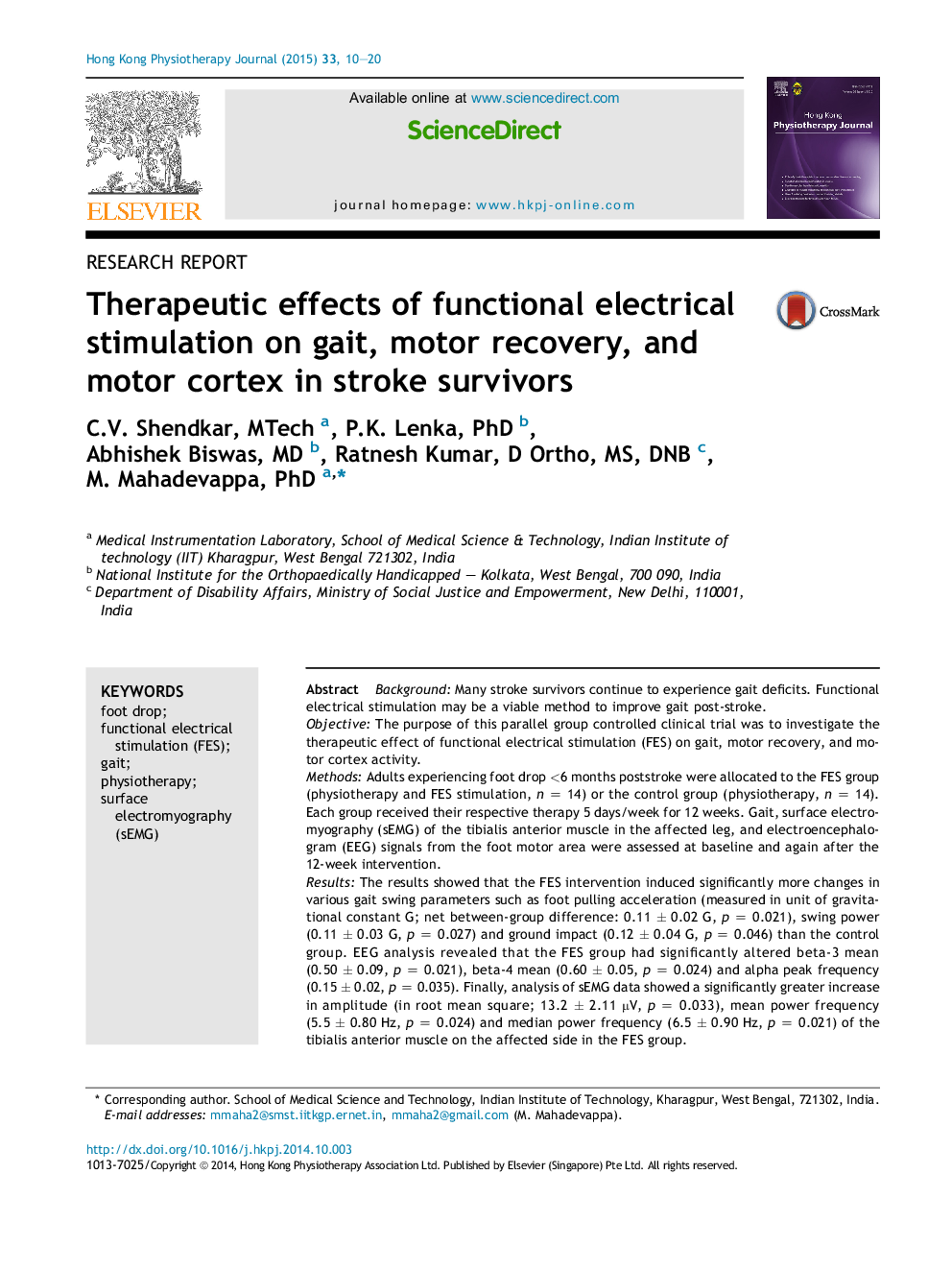| کد مقاله | کد نشریه | سال انتشار | مقاله انگلیسی | نسخه تمام متن |
|---|---|---|---|---|
| 2618266 | 1135408 | 2015 | 11 صفحه PDF | دانلود رایگان |
BackgroundMany stroke survivors continue to experience gait deficits. Functional electrical stimulation may be a viable method to improve gait post-stroke.ObjectiveThe purpose of this parallel group controlled clinical trial was to investigate the therapeutic effect of functional electrical stimulation (FES) on gait, motor recovery, and motor cortex activity.MethodsAdults experiencing foot drop <6 months poststroke were allocated to the FES group (physiotherapy and FES stimulation, n = 14) or the control group (physiotherapy, n = 14). Each group received their respective therapy 5 days/week for 12 weeks. Gait, surface electromyography (sEMG) of the tibialis anterior muscle in the affected leg, and electroencephalogram (EEG) signals from the foot motor area were assessed at baseline and again after the 12-week intervention.ResultsThe results showed that the FES intervention induced significantly more changes in various gait swing parameters such as foot pulling acceleration (measured in unit of gravitational constant G; net between-group difference: 0.11 ± 0.02 G, p = 0.021), swing power (0.11 ± 0.03 G, p = 0.027) and ground impact (0.12 ± 0.04 G, p = 0.046) than the control group. EEG analysis revealed that the FES group had significantly altered beta-3 mean (0.50 ± 0.09, p = 0.021), beta-4 mean (0.60 ± 0.05, p = 0.024) and alpha peak frequency (0.15 ± 0.02, p = 0.035). Finally, analysis of sEMG data showed a significantly greater increase in amplitude (in root mean square; 13.2 ± 2.11 μV, p = 0.033), mean power frequency (5.5 ± 0.80 Hz, p = 0.024) and median power frequency (6.5 ± 0.90 Hz, p = 0.021) of the tibialis anterior muscle on the affected side in the FES group.ConclusionFES combined with physiotherapy induced better outcomes in the swing phase of the gait cycle, activation of the affected ankle dorsiflexor muscles and cortical function when compared with conventional physiotherapy alone.
Journal: Hong Kong Physiotherapy Journal - Volume 33, Issue 1, June 2015, Pages 10–20
